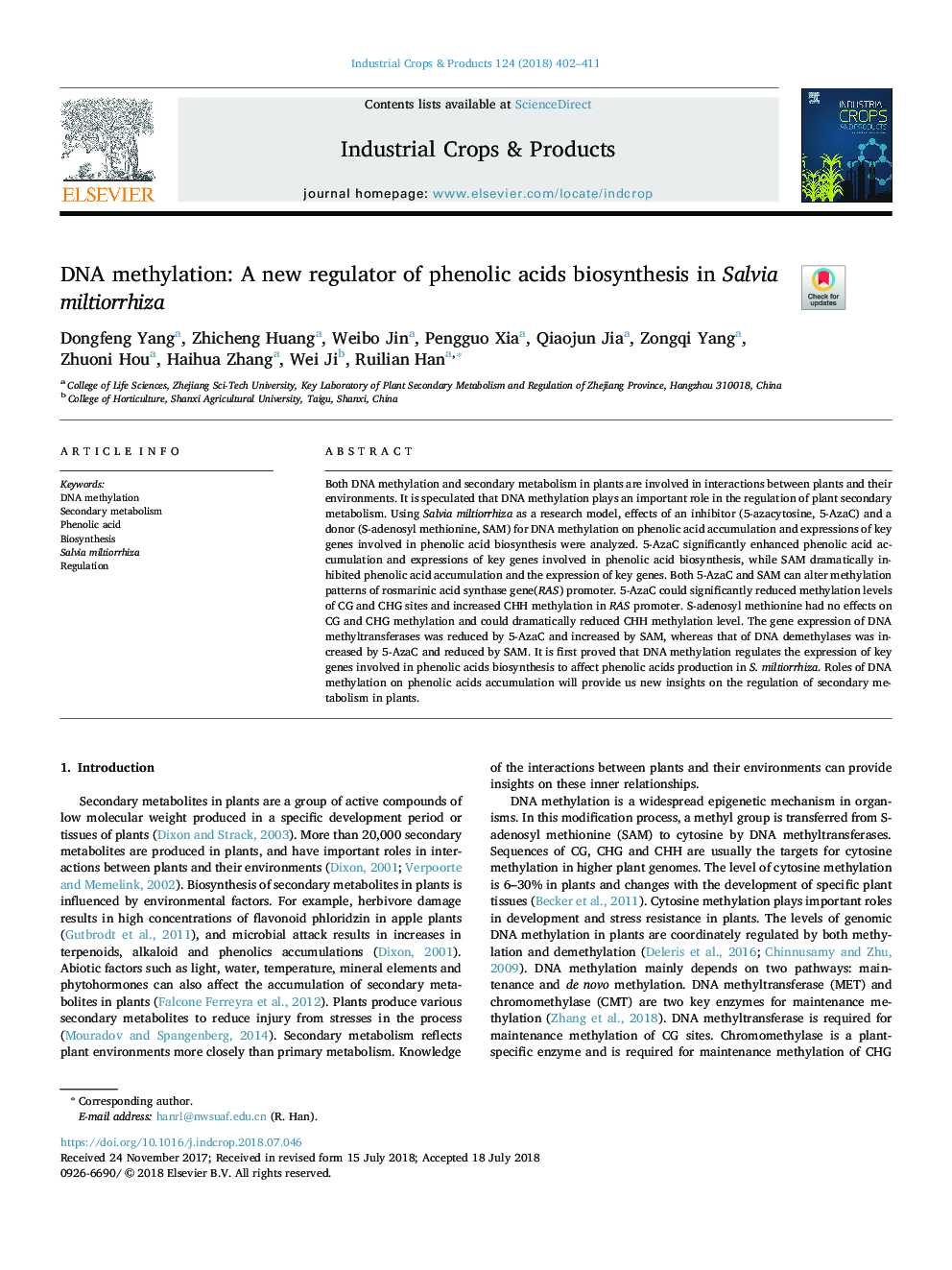| Article ID | Journal | Published Year | Pages | File Type |
|---|---|---|---|---|
| 8879519 | Industrial Crops and Products | 2018 | 10 Pages |
Abstract
Both DNA methylation and secondary metabolism in plants are involved in interactions between plants and their environments. It is speculated that DNA methylation plays an important role in the regulation of plant secondary metabolism. Using Salvia miltiorrhiza as a research model, effects of an inhibitor (5-azacytosine, 5-AzaC) and a donor (S-adenosyl methionine, SAM) for DNA methylation on phenolic acid accumulation and expressions of key genes involved in phenolic acid biosynthesis were analyzed. 5-AzaC significantly enhanced phenolic acid accumulation and expressions of key genes involved in phenolic acid biosynthesis, while SAM dramatically inhibited phenolic acid accumulation and the expression of key genes. Both 5-AzaC and SAM can alter methylation patterns of rosmarinic acid synthase gene(RAS) promoter. 5-AzaC could significantly reduced methylation levels of CG and CHG sites and increased CHH methylation in RAS promoter. S-adenosyl methionine had no effects on CG and CHG methylation and could dramatically reduced CHH methylation level. The gene expression of DNA methyltransferases was reduced by 5-AzaC and increased by SAM, whereas that of DNA demethylases was increased by 5-AzaC and reduced by SAM. It is first proved that DNA methylation regulates the expression of key genes involved in phenolic acids biosynthesis to affect phenolic acids production in S. miltiorrhiza. Roles of DNA methylation on phenolic acids accumulation will provide us new insights on the regulation of secondary metabolism in plants.
Related Topics
Life Sciences
Agricultural and Biological Sciences
Agronomy and Crop Science
Authors
Dongfeng Yang, Zhicheng Huang, Weibo Jin, Pengguo Xia, Qiaojun Jia, Zongqi Yang, Zhuoni Hou, Haihua Zhang, Wei Ji, Ruilian Han,
